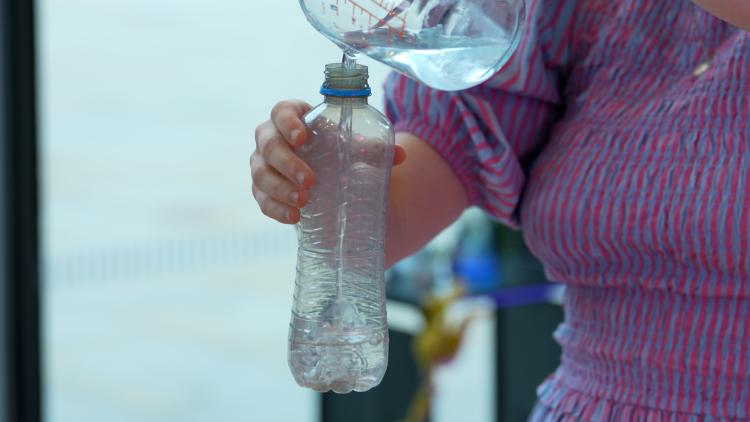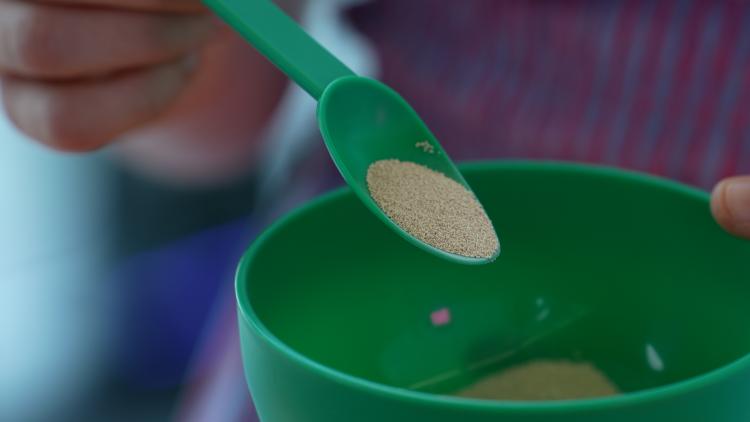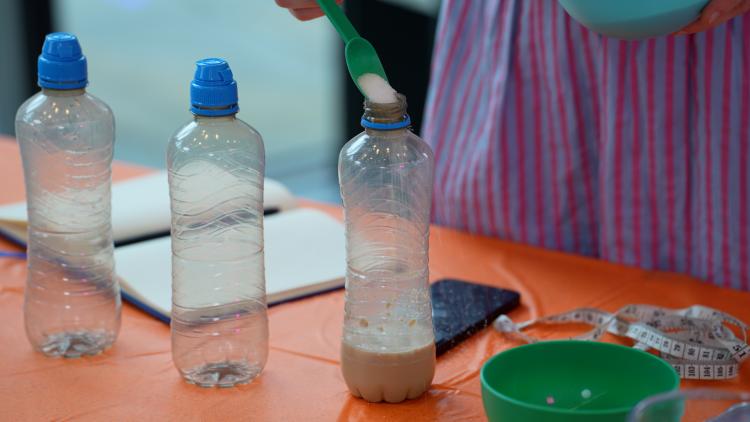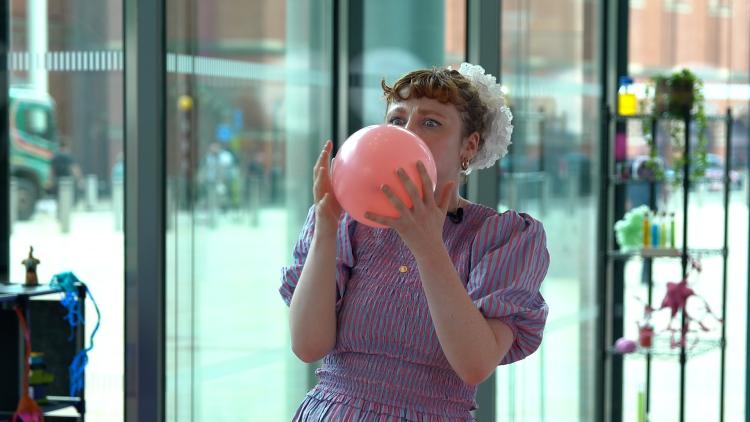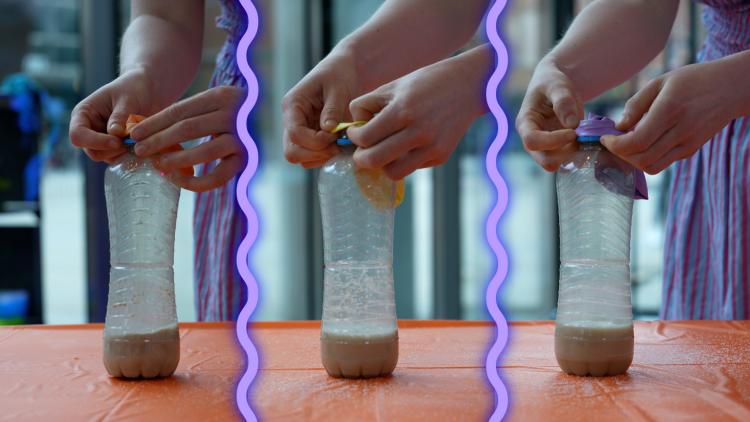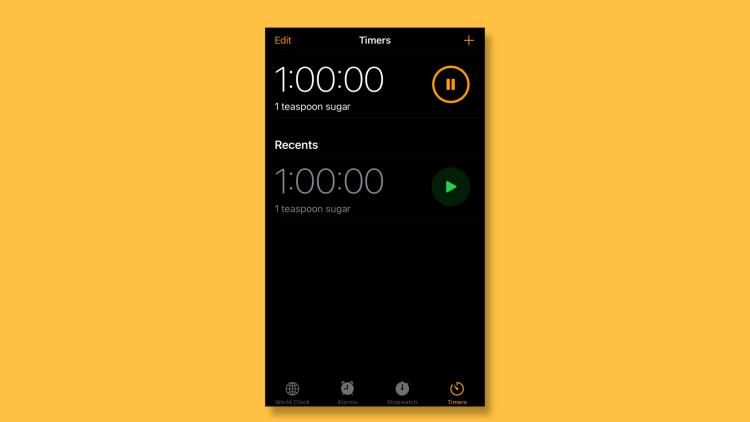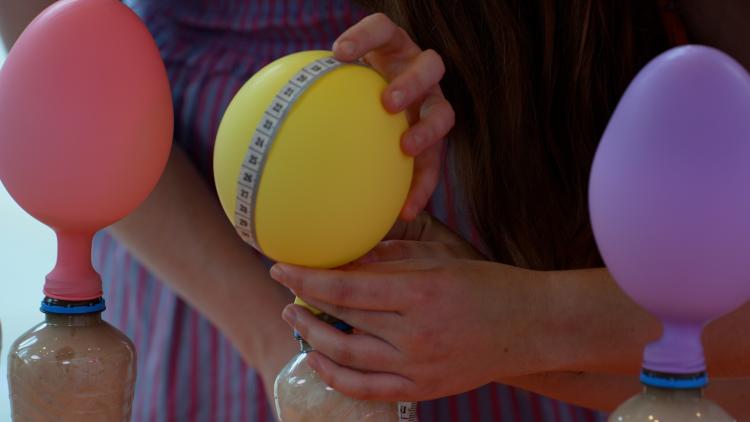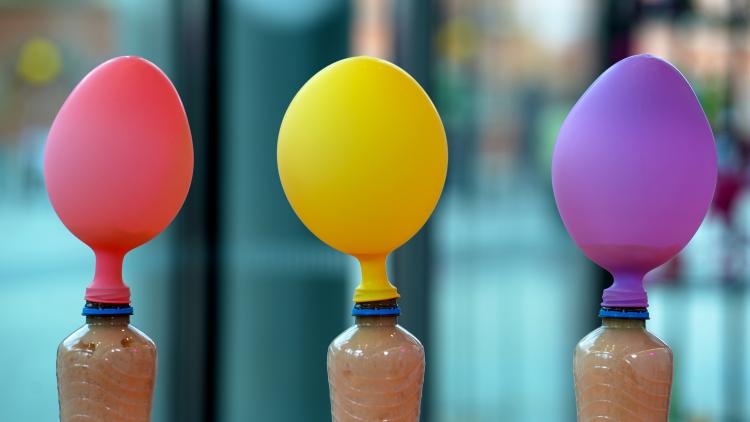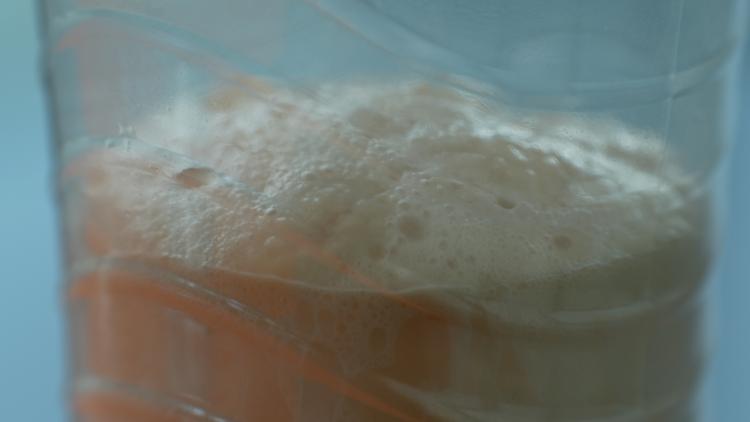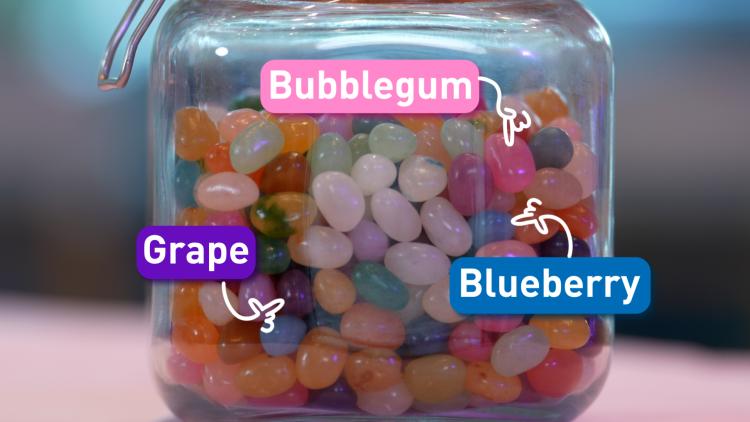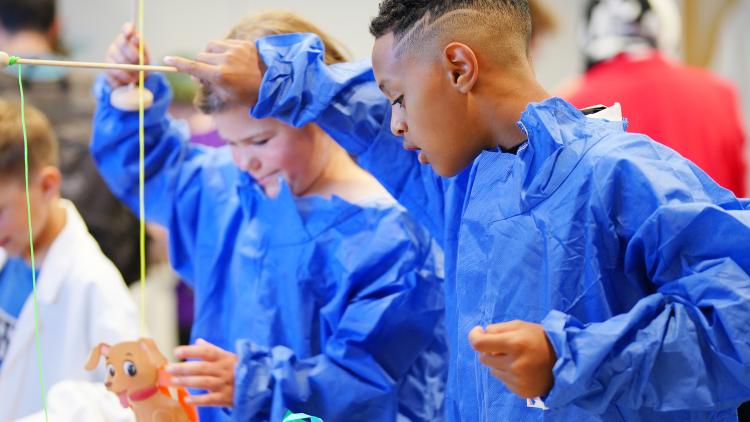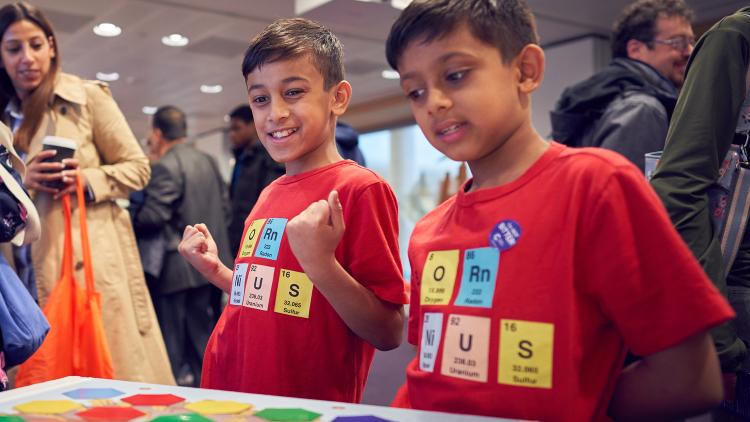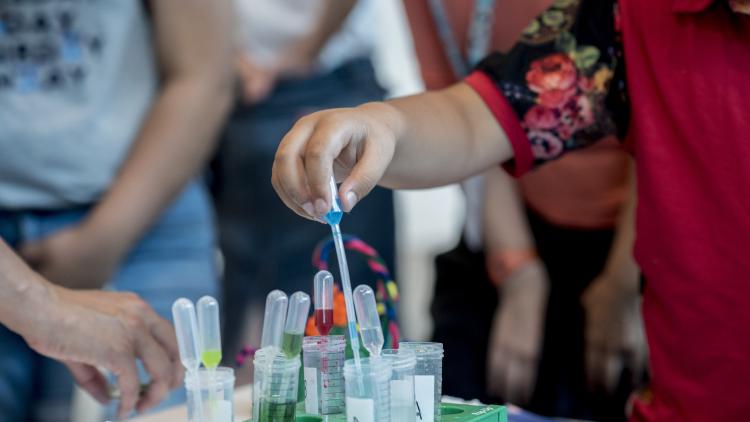Bring a balloon to life
This activity will take 60 minutes, is for ages 7 to 10 with supervision needed.
Have you heard of yeast before? Yeast makes bread fluffy and delicious.
Yeast is only one small cell, but it clumps together into groups of cells. A loaf of bread can have over a billion yeast cells in it. One yeast cell divides into more and more yeast cells very quickly.
What you'll need
- A stopwatch – you could use a phone
- Four plastic bottles the same size, max 500ml
- Four balloons
- Four packets of instant or active dry baker's yeast
- A funnel – you could use some rolled-up paper
- A measuring tape or ruler
- Warm water
- Sugar
Step by step
Start by mixing yeast with water
Pour warm water from the tap into a plastic bottle so that it's five centimetres full.
Add the yeast
Add one packet of yeast to the warm water. You might want to tip the yeast through a funnel to get it all in.
Add the sugar
Pour one teaspoon of sugar into the bottle and gently swirl to mix it all together.
Stretch the balloon over the bottle
Stretch out the balloon first by pulling it and then blowing it up and letting the air out. Then, stretch the neck of the balloon over the top of the bottle so it traps any gas leaving the bottle. Set your 60-minute timer.
Set up your other bottles
Repeat the last steps for your other bottles but add different amounts of sugar. Have one bottle with no sugar at all. Choose how much sugar you add to your other two bottles. This can range from two to ten teaspoons of sugar.
Let your yeast grow
Once your bottles are set up, leave the yeast to eat and grow for 60 minutes.
Measure your balloon sizes
The balloons on top of your bottles should be full of gas.
Using a measuring tape, or a piece of string and a ruler, measure the size of the balloons around their widest part. Measure your balloons in the order you set them up so that they have all had the full hour to expand. Write down your results.
What happened?
Did your balloons all expand to the same size, or are some bigger than others? Why are the balloon sizes different? What bottle made the biggest balloon?
Discover more!
You could try this experiment again and change elements to see how much gas the yeast makes as it grows. You could try different types of sugar, like honey, or see what happens when you change the temperature by putting your bottles in the fridge or outside.
Fun facts
A microscopic marvel
We can’t see yeast without a microscope, but this experiment shows that it is alive. Just like humans, yeast eats food for energy and makes gas as it breathes. The gas yeast makes is called carbon dioxide.
When you give yeast more food, they can divide into more yeast and make more gas, which blows up the balloons quicker. There’s a limit to how much sugar yeast can devour in an hour so you might reach a point where adding more sugar won’t make more gas.
If you've eaten fluffy bread, you’ve eaten yeast. The gas yeast makes is trapped in the stretchy bread dough, creating millions of tiny air bubbles.
Crick scientists
Here at the Crick, we have a special fermentation lab that grows yeast on a massive scale – over 10,000 litres a year. Fermentation is the name for when yeast eats sugar and makes gas (and sometimes alcohol).
Because yeast is only one cell, it gives our scientists an easy way to study how cells grow and divide. This is interesting to scientists as mistakes can happen as cells divide. These mistakes can cause diseases such as cancer.
Our scientists can also use yeast as mini factories. Yeast produces different chemicals which they can grow and use in their experiments.

